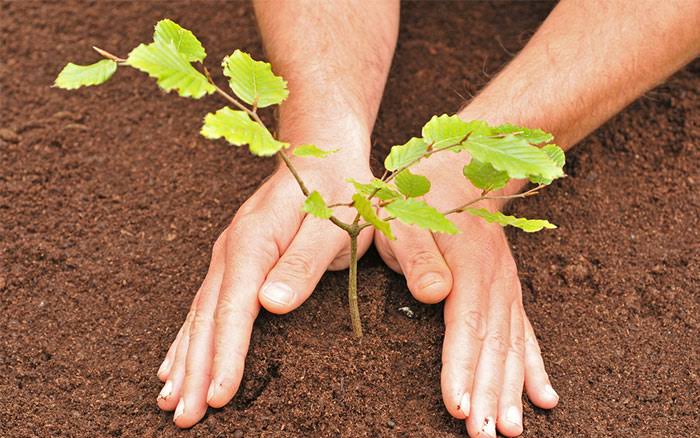Planting a tree is one of the most rewarding things you can do—for your home, your community, and the planet. Whether you’re adding shade to your garden, improving your property’s curb appeal, or contributing to environmental health, trees provide beauty, oxygen, and long-lasting benefits.But here’s the catch: planting trees the wrong way can cause them to struggle or even die within a few years. The good news? With the right techniques, it’s easier than you think. This guide will show you exactly how to plant trees done right—so simple, so clever, and so effective that even beginners can succeed.🌱 Why Planting Trees MattersBefore diving into the “how-to,” let’s appreciate the “why.” Planting trees has a huge impact on both personal spaces and the world at large:Environmental Benefits: Trees absorb carbon dioxide, filter air pollution, and provide oxygen.Property Value: Homes with trees are often valued higher and sell faster.Shade & Comfort: Strategically placed trees reduce cooling costs in summer.Wildlife Habitat: Birds, bees, and pollinators thrive in tree-filled spaces.With so many benefits, learning how to plant trees done right becomes an investment in the future.👌 Step-by-Step: How to Plant Trees the Right Way1. Choose the Right Tree for the Right PlaceNot every tree belongs in every yard. Think about:Climate Zone: Check which species thrive in your region (maple, oak, birch, etc.).Soil Type: Sandy, clay, or loamy soils affect root growth.Purpose: Do you want shade, flowers, fruit, or fast growth?2. Pick the Perfect SpotAvoid planting too close to houses, fences, or underground pipes.Consider the tree’s mature size—a small sapling may become a 40-foot giant.Allow room for roots to expand naturally.3. Dig the Hole the Clever WayDepth: The hole should be the same depth as the tree’s root ball.Width: Make it two to three times wider than the root ball. This gives roots space to spread.Loosen compacted soil around the hole for easier root penetration.4. Prepare the RootsIf your tree is in a container, gently remove it and loosen circling roots.For balled-and-burlapped trees, cut away burlap, wire, or string from the root area.5. Position the Tree CorrectlyPlace the tree so the root flare (where roots spread from the trunk) is visible just above soil level.Planting too deep is a common mistake that suffocates roots.6. Backfill with CareRefill the hole with the soil you dug out—don’t add too much fertilizer yet.Gently tamp down soil to remove air pockets.7. Water DeeplyRight after planting, soak the soil thoroughly.Deep watering encourages roots to grow downward instead of staying shallow.8. Mulch for ProtectionSpread 2–4 inches of mulch (wood chips, bark, or compost) around the base.Keep mulch a few inches away from the trunk to prevent rot.9. Stake Only If NeededIf your tree is in a windy location or has a weak trunk, add stakes loosely.Remove stakes after the first growing season to let the tree grow strong naturally.🌿 Ongoing Care After PlantingPlanting is just the first step. Here’s how to keep your tree thriving:1. WateringNewly planted trees need regular watering for the first 2 years.Rule of thumb: 10–15 gallons once a week, more in hot or dry weather.2. FertilizingSkip heavy fertilizer the first year.Afterward, use a balanced slow-release fertilizer in early spring.3. PruningLightly prune to remove dead or damaged branches.Avoid heavy pruning until the tree is well-established.4. ProtectionUse tree guards if you live in areas with deer or rodents.Avoid hitting the trunk with lawnmowers or trimmers.🌎 Clever Tips to Plant Trees SuccessfullyHere are some simple yet clever tricks to ensure success:Bucket Test: After digging, fill the hole with water. If it drains in less than 4 hours, you’re good. If not, consider a different spot.Season Matters: The best time to plant trees is spring or fall—when the weather is cooler and roots can establish before summer heat or winter frost.Group Planting: Planting multiple trees together helps with wind resistance and creates a microclimate.Native Species: Native trees require less maintenance and support local ecosystems.🌳 Mistakes to AvoidEven the most well-intentioned gardeners sometimes make these errors:Planting too close to structures.Overwatering, which can suffocate roots.Ignoring the root flare and burying it too deep.Piling mulch against the trunk (“volcano mulching”).Forgetting to water during dry spells in the first year.🏡 Beyond Planting: The Long-Term BenefitsOnce your tree takes root, the benefits grow year after year:Cooler Summers: Shade trees reduce air conditioning bills.Privacy & Noise Reduction: Trees act as natural sound barriers.Year-Round Beauty: Blossoms in spring, shade in summer, colorful leaves in autumn, and structure in winter.Legacy Planting: Trees you plant today can last for generations.ConclusionPlanting a tree is a simple yet powerful act. By following these steps, you’ll ensure your tree grows strong, healthy, and beautiful for years to come. Remember: it’s all about choosing the right tree, planting it at the correct depth, watering well, and providing a little ongoing care.So if you’re ready to make a lasting impact on your yard and the planet, keep this in mind: 👌 planting trees done right is both simple and clever—it’s a gift that keeps on giving. 🌳

